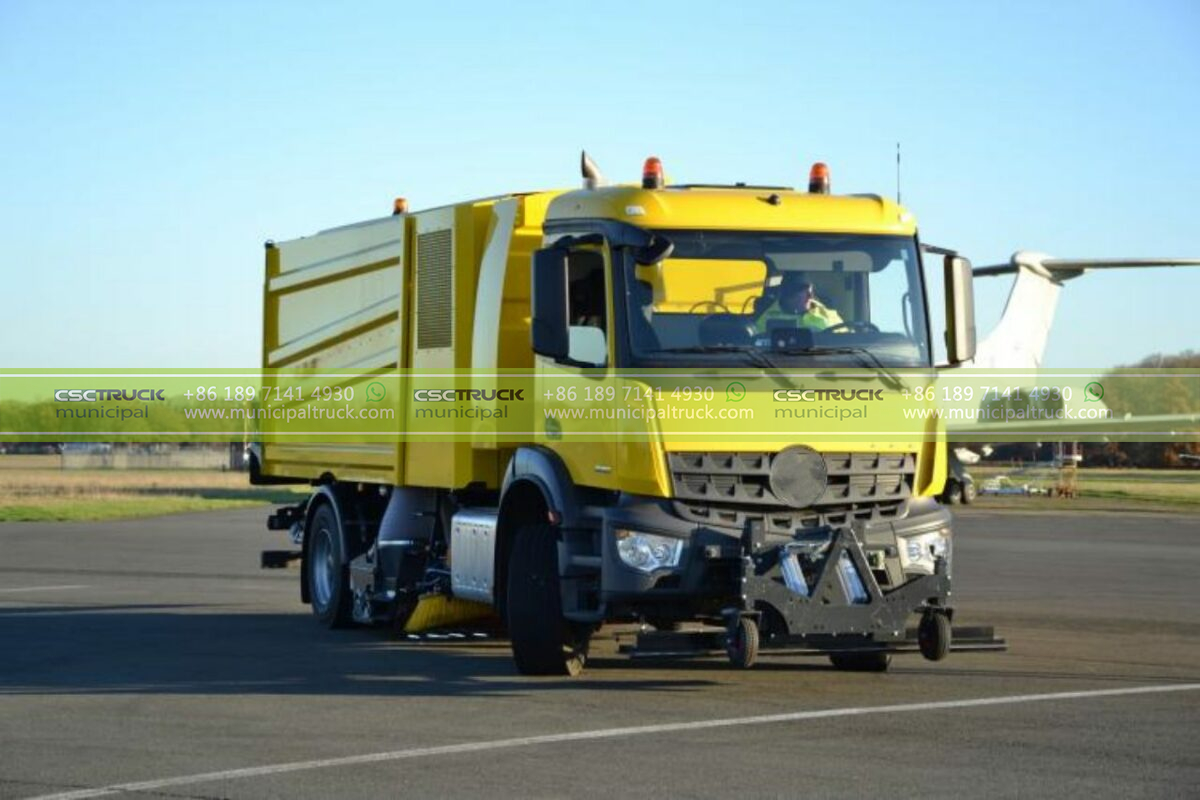Airports are bustling hubs of activity, serving as gateways to the world for millions of travelers every day. To keep these essential facilities safe and efficient, a wide range of equipment and vehicles are employed behind the scenes. One such crucial piece of machinery is the airport sweeper truck. These specialized vehicles play a significant role in maintaining the cleanliness and safety of airport runways, taxiways, and aprons. In this article, we will delve into the fascinating world of airport sweeper trucks and explore how they work.
The Importance of Keeping Airports Clean
Before we dive into the inner workings of airport sweeper trucks, it’s essential to understand why cleanliness is of paramount importance at airports. A clean and debris-free runway is crucial for several reasons:
1. Safety: Debris on runways and taxiways can pose a significant safety hazard to aircraft during takeoff and landing. Even small objects, such as loose bolts or trash, can cause severe damage to an aircraft’s landing gear or engines.
2. Efficiency: Clean runways and taxiways are essential for efficient airport operations. They enable aircraft to move smoothly, reducing taxi times and saving fuel.
3. Environmental Considerations: Debris, dust, and foreign objects on runways can impact the environment. Dust and pollutants can become airborne, affecting air quality and contributing to pollution.
4. Regulatory Compliance: Airports are subject to strict regulations and safety standards set by aviation authorities, such as the Federal Aviation Administration (FAA) in the United States. Maintaining a clean and safe environment is critical to meeting these standards.
To maintain airport cleanliness and safety, airport authorities employ a fleet of specialized vehicles, including sweepers, scrubbers, and plows. Among these, airport sweeper trucks are one of the most essential.
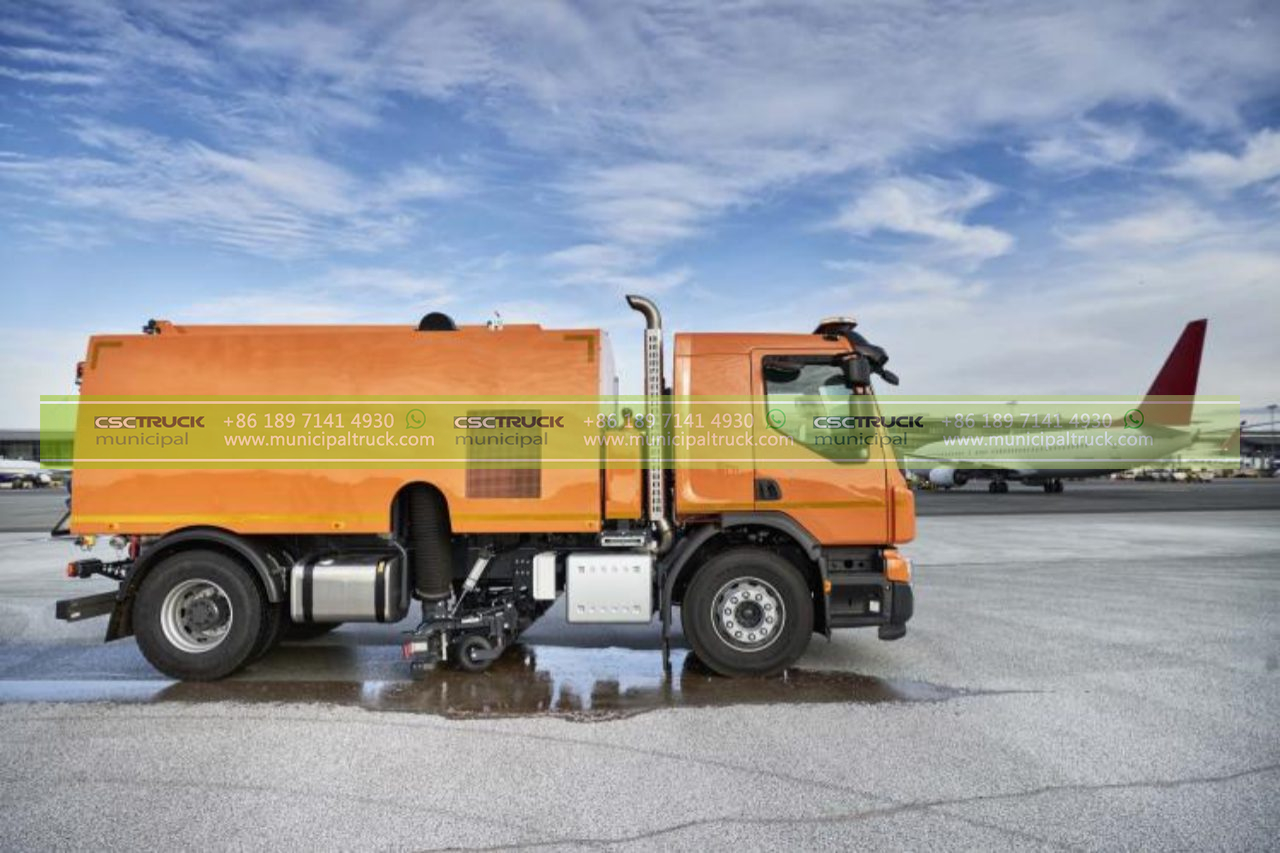
How Airport Sweeper Trucks Work
Airport sweeper trucks are designed to efficiently remove debris, dust, and foreign objects from runways and taxiways. These specialized vehicles employ several key components and mechanisms to carry out their tasks effectively.
1. Sweeping Mechanism: At the heart of every airport sweeper truck is its sweeping mechanism, which typically consists of a set of brushes and vacuum systems. The brushes are positioned in the front of the vehicle, and they rotate to agitate and dislodge debris from the runway surface. The vacuum system then collects the dislodged debris and stores it in a hopper within the sweeper truck.
2. Brushes: The brushes on airport sweeper trucks are designed to be robust and capable of withstanding the harsh conditions of runway surfaces. They come in different configurations, such as rotary brooms or pickup brooms, and can be adjusted to the desired depth for optimal cleaning.
3. Vacuum System: The vacuum system is responsible for capturing the loosened debris and transferring it to the storage hopper. It typically consists of a powerful suction fan, a network of hoses and nozzles, and a filtration system to prevent fine particles from escaping into the environment.
4. Hopper: The hopper is a large storage container located at the rear of the sweeper truck. It collects the debris vacuumed up from the runway. Hoppers vary in size, and their capacity depends on the specific sweeper truck model. When the hopper is full, the sweeper truck must be emptied.
5. Water System: To enhance the effectiveness of sweeping and reducing dust, many airport sweeper trucks are equipped with a water system. This system sprays water on the runway surface ahead of the brushes. The water suppresses dust and can help dislodge debris more easily.
6. Controls and Operator Cabin: Airport sweeper trucks are operated by skilled drivers who use a control panel in the cabin to manage the sweeper’s functions. These controls allow operators to adjust brush height, brush speed, water flow, and vacuum power, ensuring efficient and precise cleaning.
7. Safety Features: Given the critical role they play at airports, sweeper trucks are equipped with numerous safety features. These include warning lights, backup alarms, and systems to prevent accidental hopper spillage. They are also designed with high visibility in mind to ensure that other vehicles and aircraft can easily see them on the runway.
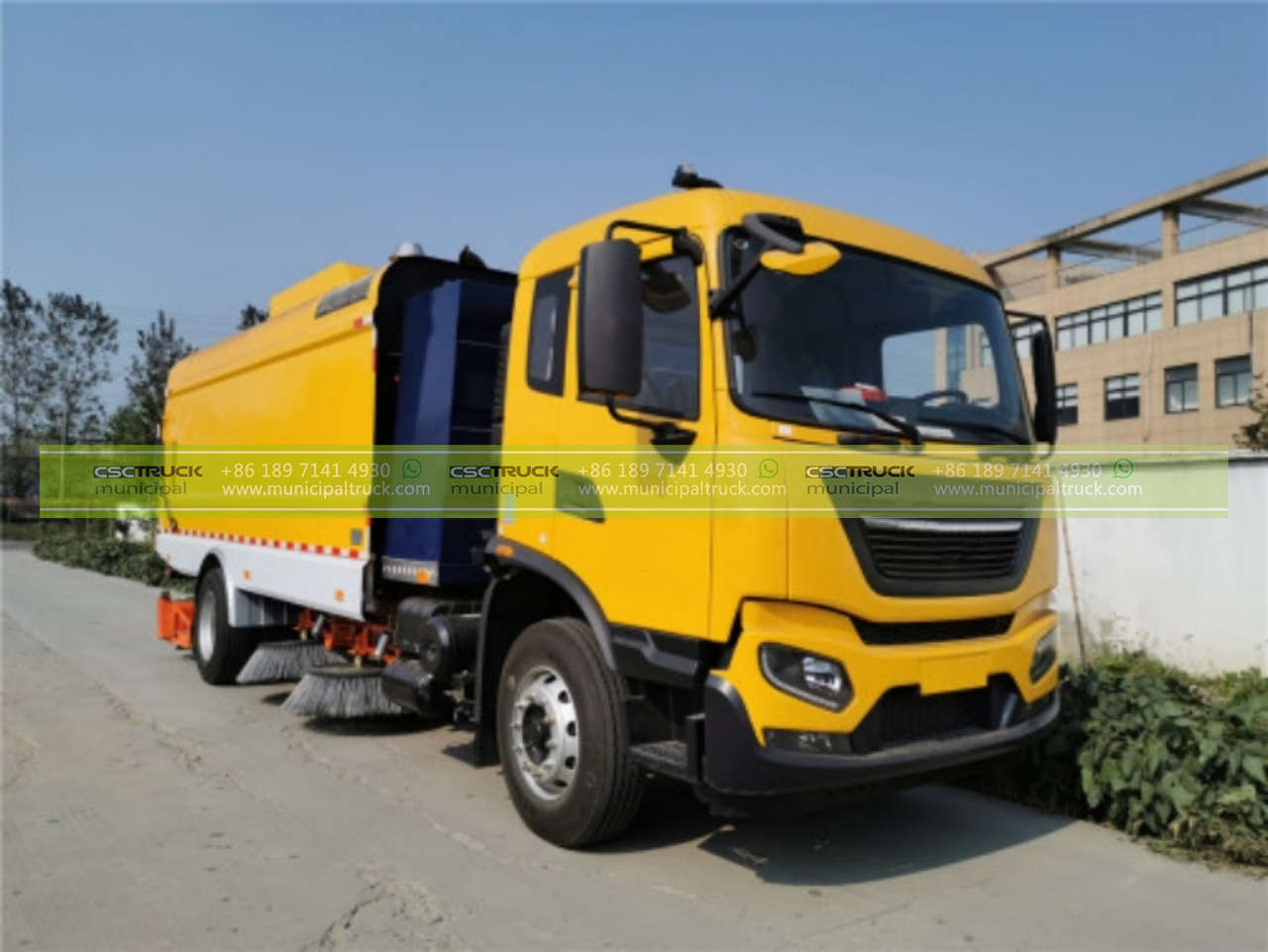
Types of Airport Sweeper Trucks
There are different types of airport sweeper trucks available, and their choice depends on the specific needs of the airport. Some common types include:
1. Mechanical Broom Sweepers: These sweepers use a rotating broom to sweep debris into a collection hopper. They are suitable for removing larger debris from runways.
2. Regenerative Air Sweepers: Regenerative air sweepers use a powerful airflow to dislodge debris from the runway surface and direct it into the hopper. These sweepers are highly efficient in removing fine dust particles.
3. Vacuum Sweepers: Vacuum sweepers are equipped with a powerful vacuum system that directly sucks up debris from the runway. They are effective at removing all types of debris and dust.
4. Runway Scrubbers: Runway scrubbers not only sweep but also use water and scrubbing brushes to deep-clean runway surfaces, making them suitable for airports with high cleanliness standards.
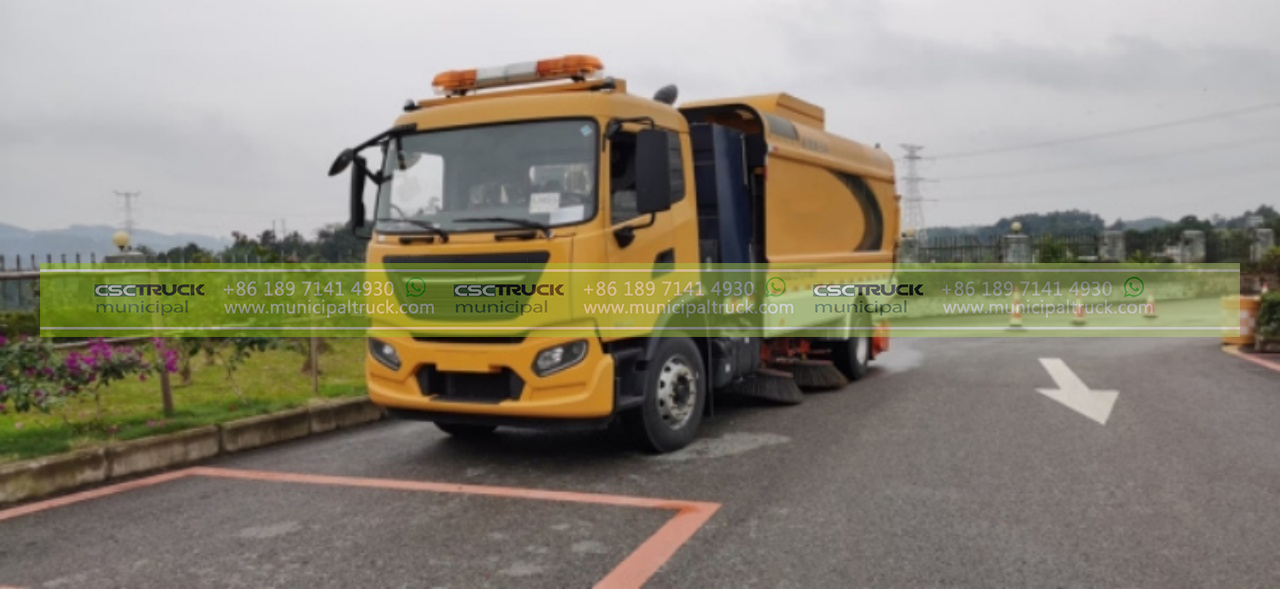
Maintenance and Environmental Considerations
Proper maintenance is crucial for the longevity and effectiveness of airport sweeper trucks. Regular inspections and servicing are necessary to ensure that all components, including the brushes, vacuum system, and water system, are in optimal working condition.
Environmental considerations are also essential when using airport sweeper trucks. The collection of debris may include hazardous materials or chemicals, such as spilled fuel or de-icing fluids. Airport authorities must handle and dispose of these materials responsibly, following environmental regulations and best practices.
In terms of environmental impact, the use of water in sweeper trucks can lead to concerns about water conservation and runoff management. Airports need to implement sustainable practices, such as recycling collected water, to minimize their environmental footprint.
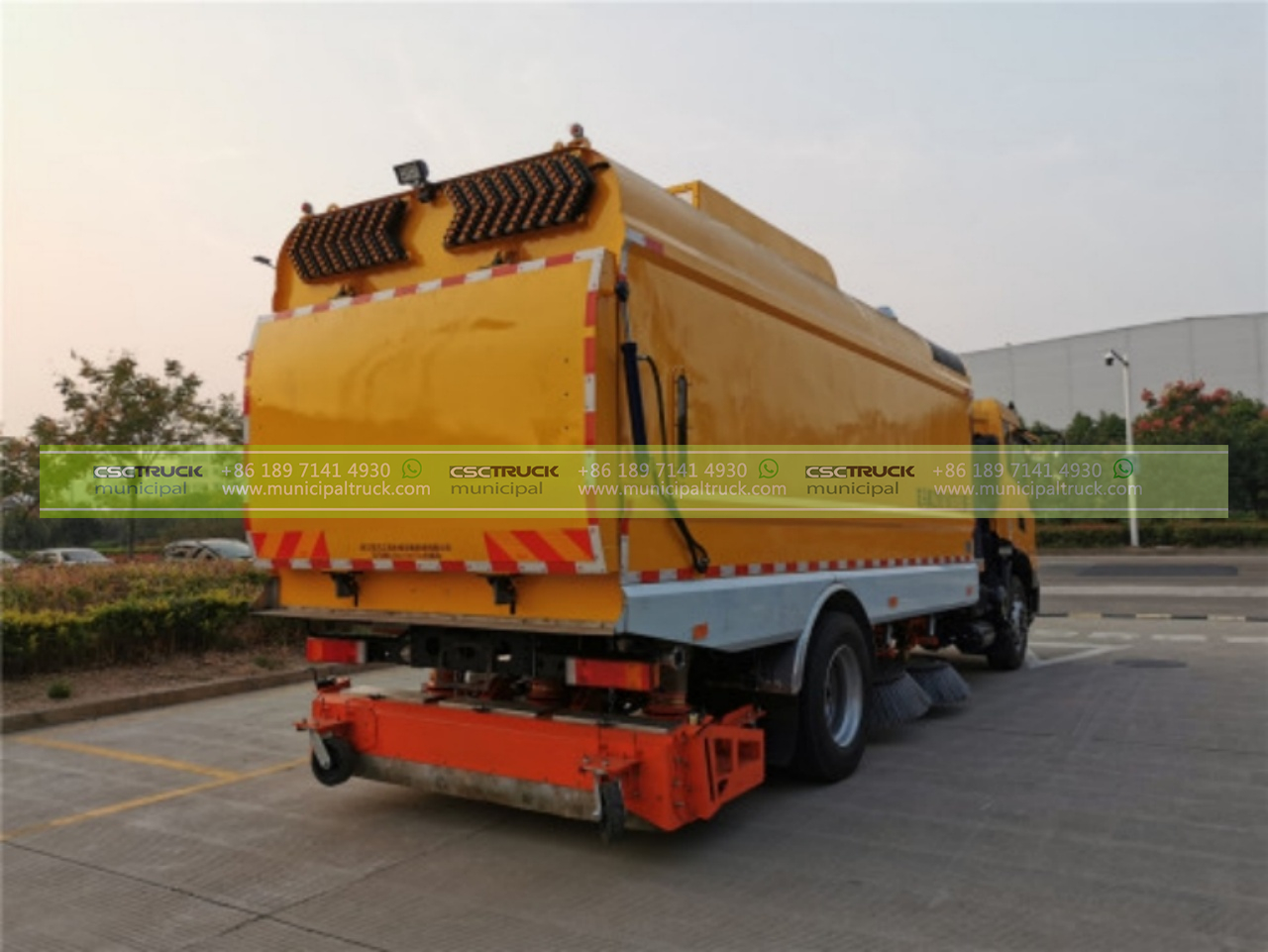
Challenges in Airport Sweeping
Operating an airport sweeper truck is no small task. Sweeping runways come with its own set of challenges:
1. Safety: Operating heavy machinery on active runways requires vigilant attention to safety. Airports must adhere to strict safety protocols to prevent accidents.
2. Weather Conditions: Sweeping can be challenging in adverse weather conditions, such as rain, snow, or strong winds. These factors can impact the efficiency of the sweeping process and may require adjustments to the sweeper’s settings.
3. Debris Variability: Airports encounter a wide range of debris, from small debris like bird feathers to larger objects like FOD (foreign object debris). Sweeper trucks must be versatile enough to handle all types of debris.
4. Efficiency and Scheduling: Sweeping must be coordinated to minimize disruption to airport operations. Finding the right balance between sweeping efficiency and operational requirements is a constant challenge.
5. Environmental Regulations: Meeting environmental regulations and sustainability goals is an ongoing concern. Airports need to balance effective cleaning with minimizing environmental impact.
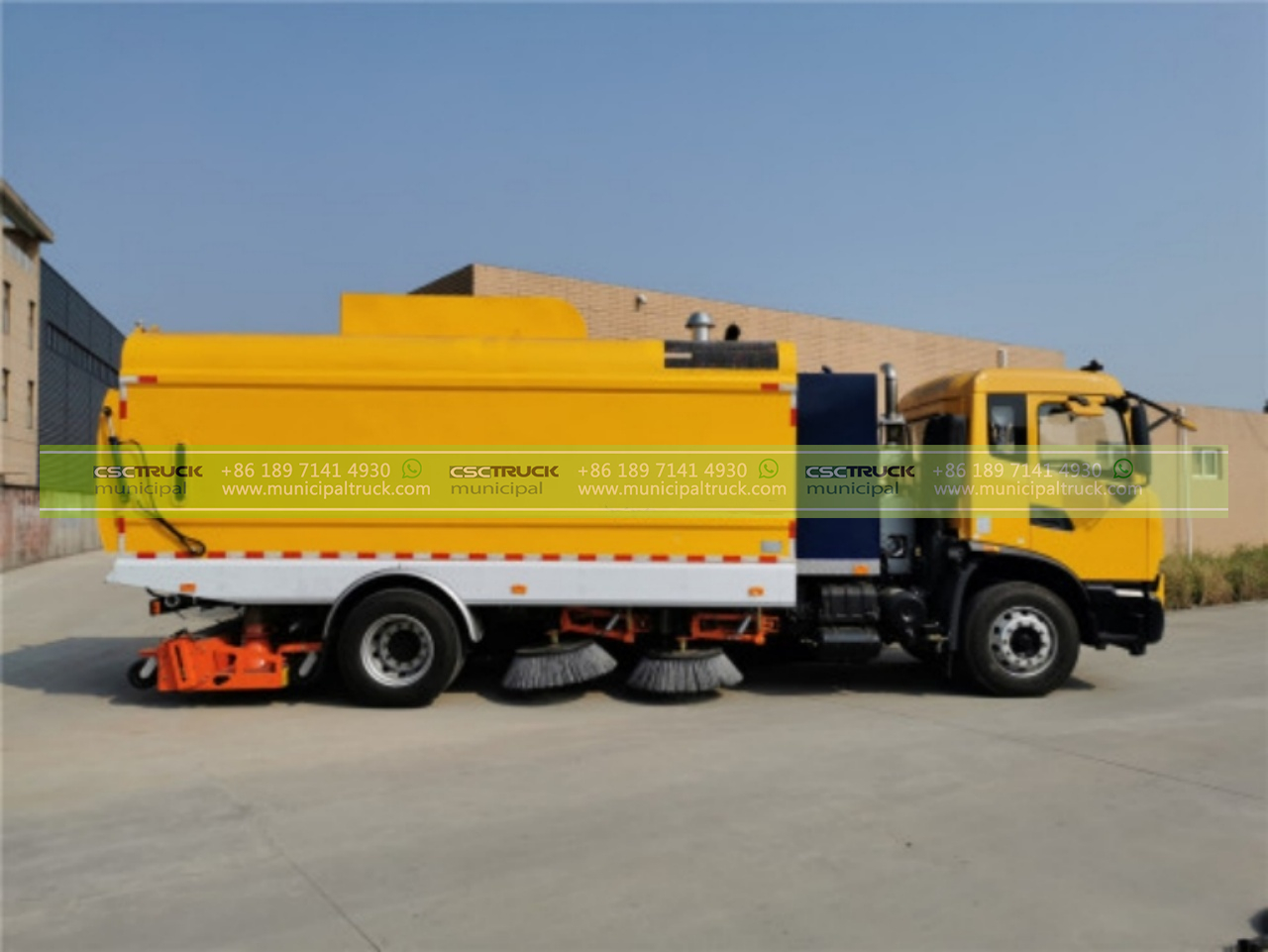
Conclusion
Airport sweeper trucks are unsung heroes in the world of aviation. They work tirelessly behind the scenes to keep runways and taxiways safe and clean, ensuring the smooth operation of airports worldwide. By understanding how these specialized vehicles work, we gain a deeper appreciation for the intricate choreography that occurs on the tarmac and the dedication of the people who operate and maintain these essential machines. As airports continue to evolve and grow, airport sweeper trucks will remain a crucial part of the infrastructure that ensures the safety and efficiency of air travel.
As technology advances, airport sweeper trucks are likely to see improvements in their design and capabilities. Innovations in materials and engineering may lead to more durable and efficient brushes and vacuum systems. Additionally, there will be a continued focus on sustainability and reducing the environmental impact of sweeping operations. This may involve the development of more advanced water recycling systems, reduced emissions, and quieter operations to minimize disruption to airport communities.
In the ever-changing landscape of aviation, airport sweeper trucks will remain an essential component of airport operations. Their role in maintaining the safety and cleanliness of runways not only ensures the well-being of passengers and crew but also contributes to the overall efficiency and environmental responsibility of the aviation industry.
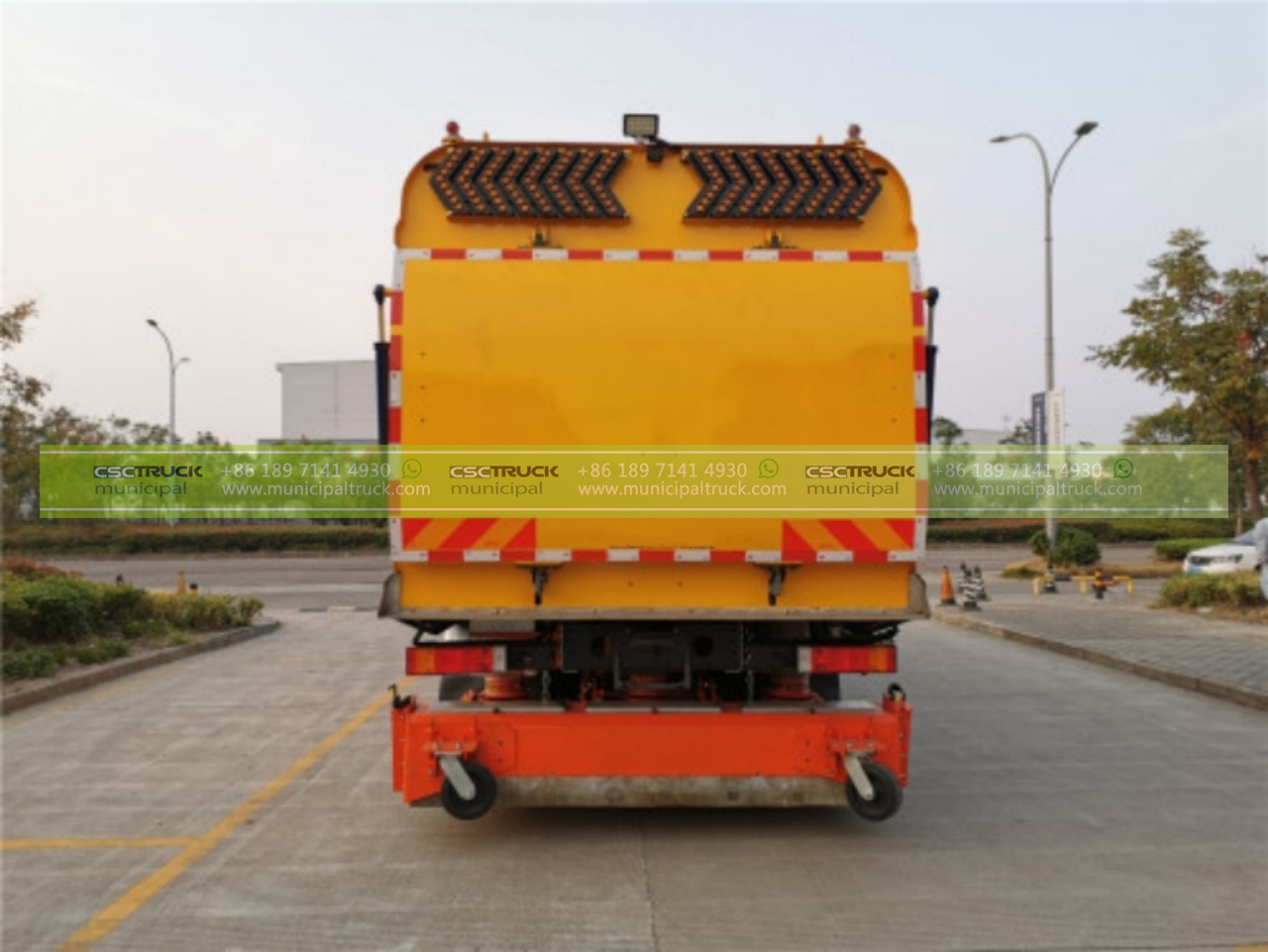
Airports around the world will continue to rely on these workhorses of the tarmac, and as technology and best practices evolve, airport authorities will be better equipped to address the challenges they face. From sweeping away foreign object debris to minimizing dust and pollutant emissions, airport sweeper trucks will remain a fundamental element of airport infrastructure, serving as silent guardians that keep the skies safe and the runways clear.
So, the next time you embark on a journey, whether it’s a short domestic flight or a long-haul international adventure, take a moment to appreciate the unsung heroes of the aviation world—those dedicated airport sweeper trucks that ensure your takeoff and landing are as smooth and safe as can be. In the grand tapestry of aviation, these remarkable vehicles play a vital role in maintaining the high standards of cleanliness and safety that airports and passengers depend on every day.
Contact us for this municipal truck or similar trucks: [email protected] Call us or What's APP us: +86 189 4292 3930

